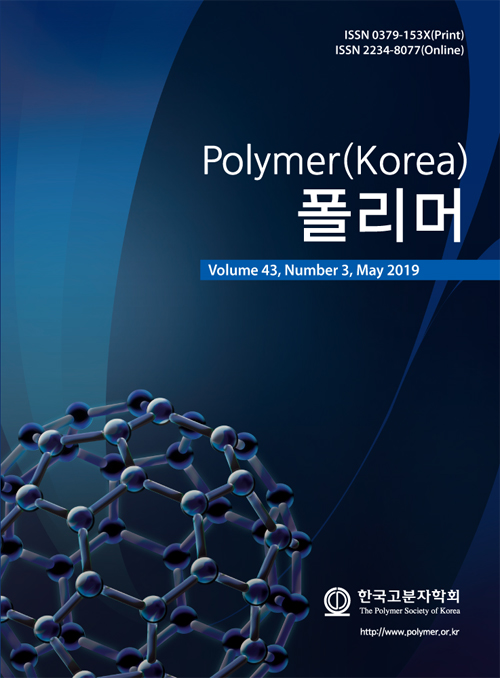- Synthesis of PIBSI Derivatives Using Highly Reactive Polybutene and Their Friction Reducing Effects
Min Sup Park*,****, Joonho Kim*, Jeongkwon Kim*, Jinsook Hong**, Young-Wun Kim**,
Jae Hee Song***, and Yeong-Joon Kim*,†
*Department of Chemistry, Chungnam National University, Daejeon 34134, Korea
**Green Chemistry Research Division, Surfactant & Lubricant Research Team, KRICT, Daejeon 34114, Korea
***Department of Chemistry, Sunchon National University, Suncheon, Jeollanam-do 57922, Korea
****Petrochemical Division, Dealim Industrial Co., Ltd., Daejeon 34108, Korea- 고반응성 폴리부텐을 사용한 새로운 PIBSI 유도체 합성과 윤활유 첨가제로 사용하였을 때 마찰저감 효과
*충남대학교 화학과, **한국화학연구원, ***순천대학교 화학과, ****대림산업
Highly reactive polyisobutylene (HRPB) is widely used as a lubricant additive and a fuel detergent. In this study, HRPB350 was synthesized by cationic polymerization, and HRPB260 was obtained by distillation of the by-product, for example, light polymer (LP), from the HRPB350 synthesis. Polyisobutenyl succinic anhydride (PIBSA) was synthesized by the reaction of HRPB and maleic anhydride and then converted to polyisobutenyl succinimide (PIBSI) derivatives by introducing heterocyclic moieties containing S and N atoms. The new PIBSI derivatives were expected to act as friction reducing agents since these molecules contain S and N which strongly interact with metal surfaces. The friction reducing properties in Yubase 6 and DB51 base oil were evaluated using a 4-ball tester. The wear scar diameters with polyisobutenyl succinimide (PIBSI) additives are comparable to those with commercially available products such as Zn-DTP.
고반응성 폴리부텐(HRPB)은 윤활유 첨가제 및 연료 청정제로 널리 사용되고 있다. 평균 분자량이 350인 HRPB350을 양이온 중합으로 얻었으며, 이 반응의 부산물을 분별 증류하여 HRPB260을 제조하였다. HRPB260과 350에 말레산 무수물(MA)을 반응시켜 polyisobutenyl succinic anhydride(PIBSA)를 만든 후 S와 N 원자를 포함하는 헤테로 고리를 도입하여 새로운 polyisobutenyl succinimide(PIBSI) 유도체를 합성하였다. 이들 유도체는 분자 내에 금속 표면과 강한 상호 작용을 할 수 있는 S와 N을 포함하고 있기 때문에 마찰 저감제로 사용될 수 있다고 판단하였고, Yubase 6와 DB-51을 7:3으로 혼합한 오일에 새로운 PIBSI 유도체를 1 wt% 첨가하여 4-ball 테스트로 마모흔(WSD)을 측정하였다. 새로운 PIBSI 유도체의 마찰 저감 효과는 현재 상업적으로 쓰이는 제품들과 비슷한 수준의 결과를 보였다.
Keywords: highly reactive polyisobutylene, polyisobutenyl succinimide derivatives, friction reduction, lubricant additives
- Polymer(Korea) 폴리머
- Frequency : Bimonthly(odd)
ISSN 0379-153X(Print)
ISSN 2234-8077(Online)
Abbr. Polym. Korea - 2023 Impact Factor : 0.4
- Indexed in SCIE
 This Article
This Article
-
2019; 43(3): 394-400
Published online May 25, 2019
- 10.7317/pk.2019.43.3.394
- Received on Jan 23, 2019
- Revised on Feb 15, 2019
- Accepted on Feb 20, 2019
 Correspondence to
Correspondence to
- eong-Joon Kim
-
Department of Chemistry, Chungnam National University, Daejeon 34134, Korea
- E-mail: y2kim@cnu.ac.kr









 Copyright(c) The Polymer Society of Korea. All right reserved.
Copyright(c) The Polymer Society of Korea. All right reserved.